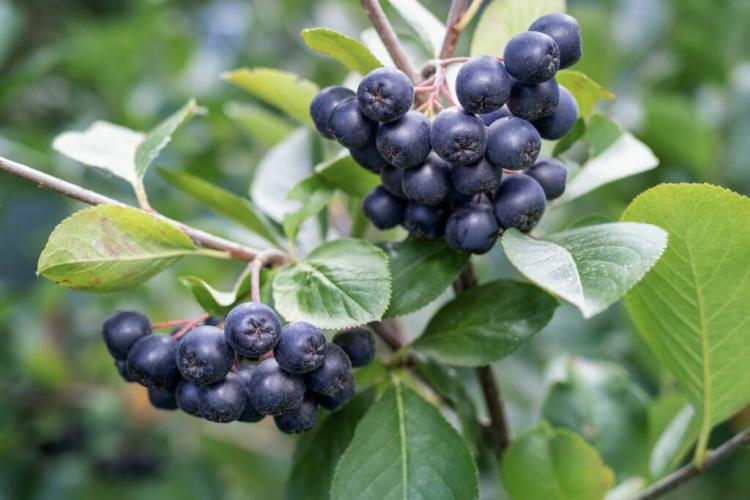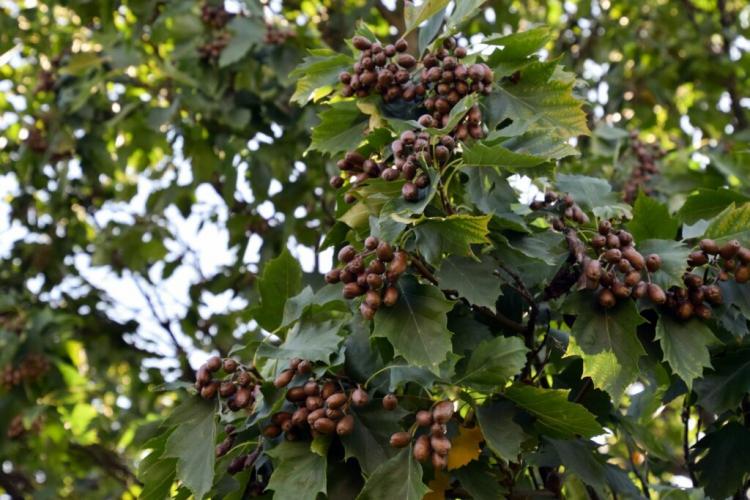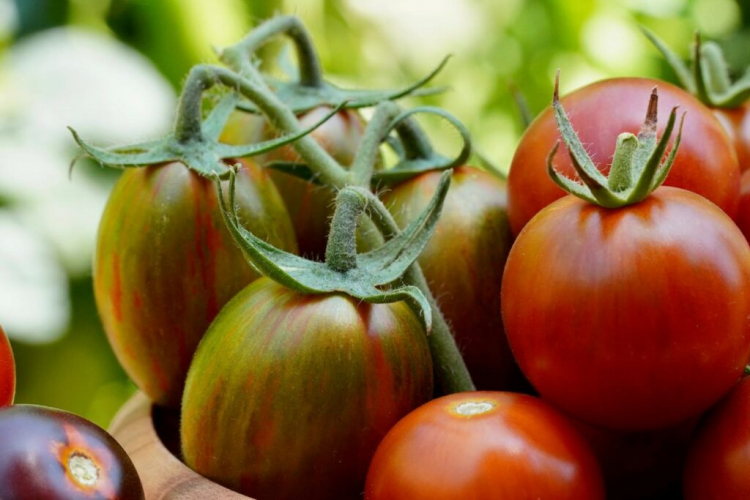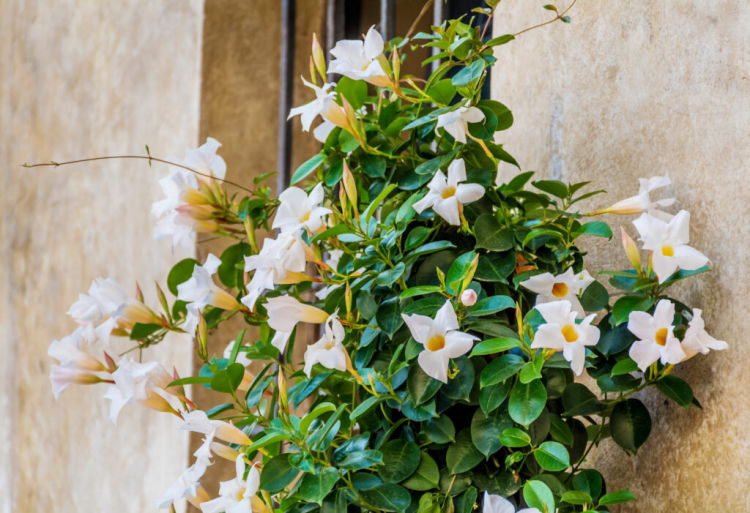Vinegar Tree: All About Varieties, Plants And Care
The vinegar tree stands out especially late in the year due to its splendid autumn coloring. Here you can learn everything about this special tree and how to cultivate it.
The velvety-soft vinegar tree grows as a pioneer plant on roadsides and embankments, but can also be planted well in the garden. In this article, you will find an overview of different vinegar tree varieties, tips on cultivating the small tree in the garden and tubs, and how to use the fruits of the vinegar tree.
Vinegar Tree: Origin And Characteristics
Table of Contents
The vinegar tree (Rhus typhina), also called deer-cob sumac, belongs to the sumac family (Anacardiaceae). The name rhus is derived from the Greek word “rhain”, which means “to flow” and probably refers to the milky sap that is strongly leaking when injured. There are about 200 species worldwide, distributed in the tropics, subtropics, and temperate zones. Us has known ornamental tree Rhus typhina originally comes from the eastern part of North America.
The vinegar tree grows with one shoot as a small tree or with several shoots as a large shrub and grows about 4 to 6 m, in exceptional cases even up to 10 m high and just as wide when old. In the young years, the vinegar tree creates 30 to 40 cm annual growth, in the age, the growth decreases strongly. The young shoots are brown and velvety soft hairy, the bark is then dark brown in color and interspersed with milky sap.
The deciduous small tree forms thick, antler-like branched shoots. The typical, up to 60 cm long lance-shaped, pinnate leaves of the vinegar tree are attached to these. They are grass-green on the upper side and light grey-green on the underside. After the summer, the splendid autumnal coloring develops in bright shades of yellow-orange to scarlet-red.

From June to July the up to 20 cm long yellow-green and upright flower panicles bloom at the end of the annual wood. They offer bees and other pollinators plenty of nectar and pollen. After pollination, the dark red, velvety seeds develop on the cob-shaped seed stalks. These remain on the plant in winter and make it look very decorative. The taste of the vinegar tree fruits is sour – they used to have vinegar added to make them even sourer.
Harvest and use of the vinegar tree fruits
In late autumn from October, but also throughout the winter, the fruit of the vinegar tree can be harvested and dried. The seeds of the vinegar tree are edible. For a long time in the USA, the so-called “Indian Lemonade” has been made from them: A sour, reddish refreshing drink made from vinegar tree fruits that have been steeped in water and sugar.
The dried seeds are sour and aromatic, they are used for seasoning. Vinegar tree spice from the seeds of Rhus coriaria is widely used under the name “Sumac” and in the Zahtar spice mixture also in oriental cuisine in salads, fish, and meat dishes.
Is the vinegar tree poisonous?
The vinegar tree is slightly poisonous in all parts except for its ripe fruits. For herbivores such as horses, rabbits & Co, the consumption of large quantities can therefore lead to stomach cramps. Even dogs that occasionally nibble on leaves cannot tolerate vinegar tree leaves or other parts of the plant. The milky sap that leaks out in case of injuries is generally irritating to the skin, which is why gloves should be worn when moving or cutting vinegar trees.
The best vinegar tree species and varieties
There are different species and varieties of vinegar trees, which differ significantly in leaf shape and growth height. We present the most important varieties of an ornamental shrub. All these species and varieties are completely hardy in our latitudes down to below -20 °C.
- Rhus typhina ˈDissectaˈ: Curved growing fern frond vinegar tree with finely pinnate and fernlike slit leaves. Can grow 4 m high and up to twice as wide.
- Rhus typhina ˈTiger Eyesˈ: A rather small vinegar tree of only 1.5 to 2 m in height. The autumn coloration covers all colors of a tiger’s eye – hence the name.
- Rhus glabra: Scarlet sumac with 2 to 3 m height and completely hairless shoots. In autumn extremely ornamental with fiery orange-red leaves and wine-red fruits.
- Rhus glabra ˈLaciniataˈ: Slotted vinegar tree with comparatively weak growth and bright red autumn coloring. This species and variety reach a growth height and width of 2 to 3 m.
Note on the danger of confusion: At first glance, the vinegar tree can easily be confused with the tree of gods (Ailanthus altissima). The pinnate leaf shape, the velvety hairy shoots and the inflorescences are very similar. However, the Tree of God grows to a height of over 20 m and its inflorescences are not cobs but winged seeds, which are more reminiscent of maple (Acer sp.).
Plant vinegar tree
The ideal location for vinegar trees is sunny on permeable, moderately nutritious, and preferably somewhat sandy soils. Otherwise, this ornamental shrub is extremely undemanding, as it thrives in moderately dry and moist locations, whether acidic or alkaline, sandy or clayey.
The right time to plant vinegar trees in autumn or early spring. From October to November, when the trees go into hibernation and therefore hardly any water evaporates, new roots can develop in peace. If you plant your vinegar tree in spring, you should water it regularly for the first few weeks until the tree has grown well. Plants or seeds can be purchased from the vinegar tree, planting small trees is most common.
First, loosen the soil over a large area and not only at the future planting site. Now place your plants in a dug-out planting hole and, if necessary, add a little mainly organic slow-release fertilizer. You can mix very sandy soils with high-quality planting soil.
Fertilizing with organic fertilizers is particularly worthwhile when planting, as these provide long-term nutrients. Then fill the hole again with the excavated soil and water the vinegar tree well. To other plants, you should keep a minimum distance of 3 m, so that the vinegar tree has enough space to spread.
Tip: When planting vinegar trees, we strongly recommend that you bury a root barrier with them. This should be at least 60 cm deep and can effectively stop the many runners of the vinegar tree from spreading.
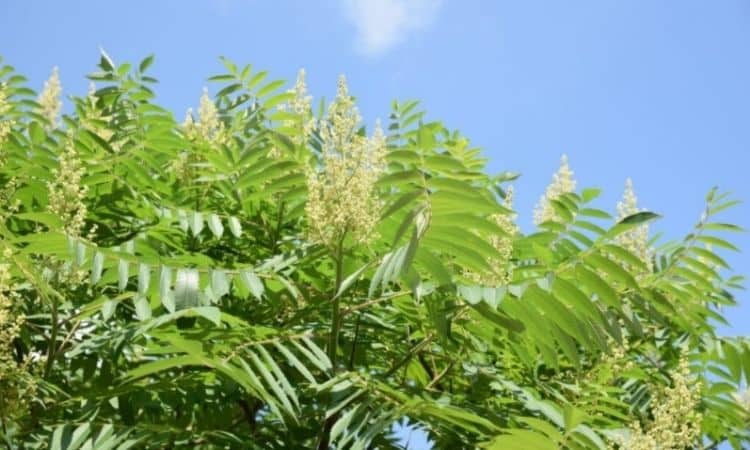
You Might Also Like Dark Galaxy Tomato
Care of the vinegar tree
The vinegar tree is very easy to care for throughout the year. It should only be watered in extremely dry summers, especially in the first years after planting. Later, however, the vinegar tree can cover its own water needs well, even if it is dry for a longer period of time.
Since the vinegar tree is a shallow rooting tree, you should absolutely avoid digging or chopping under the ornamental tree. This can quickly hurt many roots. On poor soils, it is worthwhile to apply a small annual fertilizer in spring at the beginning of leaf emergence.
Vinegar trees rarely need to be cut. Only if individual branches disturb the location, they can be removed. Otherwise, the roe deer-covers sumac forms its funnel-shaped or roof-shaped crown all by itself. If you still need to use scissors, the right time is early spring – February to March. You should wear gloves because of the skin-irritating milk juice.
Tip: If the fleshy, flat-lying roots of the vinegar tree are injured, it encourages the tree to form many root runners. Therefore, you should definitely leave this area untouched, because the strong growth activity of the tree is then often preserved for years. Too much pruning also results in this.
Vinegar tree in a tub
Only weakly growing varieties, like Rhus typhina ˈTiger Eyesˈ, are suitable for pot culture. First, choose a sufficiently large planter with at least 20 liters of volume. Make sure that the water drains well and that there is an approximately 5 cm thick drainage layer of coarse gravel, sand, or expanded clay at the bottom of the container.
Now plant the vinegar tree in loose planting soil. This does not contain any peat at all and stores sufficient moisture thanks to its high compost content. In addition, it already contains important nutrients that promote and accelerate the growth of the vinegar tree.
About every two years, the fast-growing ornamental tree needs a new, larger pot when it is young and should always be given a fertilizer supplement. In the pot, nutrients are quickly used up due to the limited volume of soil and should then be refreshed.
You Might Also Like Planting Arnica
Vinegar tree hibernate
Vinegar trees are extremely hardy woody plants and do not need any protection against cold in the garden. The situation is different, however, with a vinegar tree in a pot, because there is a risk that the soil in the tub, including the roots, will freeze through and the tree will die.
The ornamental small tree should be protected in a cool summer house, shed, or in a protected carport for the winter. With the help of fleece on the outside and a thick layer of leaves or polystyrene under the container of the little tree, you can additionally insulate the vinegar tree well in the pot.
The hibernation area should be bright and cool, the temperatures may also drop slightly into the minus range. With a low water supply, the vinegar tree can survive the winter so well. In the house or winter garden, however, it is much too warm for a good wintering of the vinegar tree.
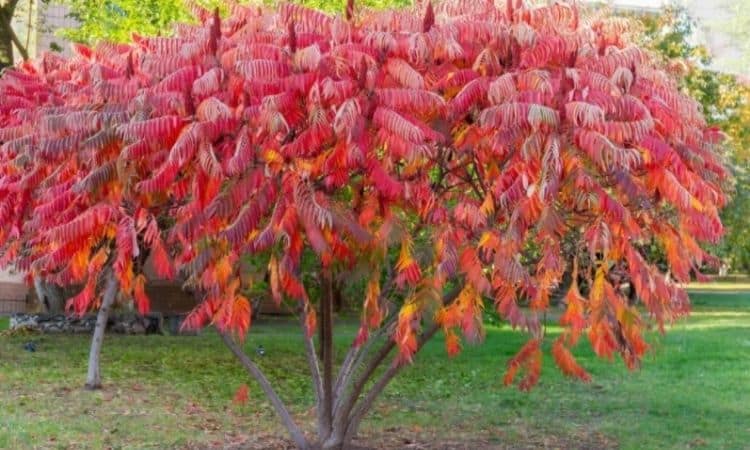
Propagate vinegar tree: shoots, seeds
The vinegar tree can be propagated by root runners, root cuttings, cuttings, or from seeds:
To use existing root runners, use a spade to cut off the vinegar tree branch generously all around and thus sever the connection to the mother plant. Now you can replant the new vinegar tree in a different place. Propagation via cuttings is best done in autumn or early spring before the leaves sprout, just like plants.
New vinegar trees also grow from sections of thick roots, the so-called root cuttings. Nurseries use this method to propagate their varieties. All you have to do is dig up a thick, fleshy root and place it in a moist, well-drained growing soil. With a little time, a new plant will grow from it.
Cuttings of the vinegar tree are a gentle method of propagation. For this purpose, healthy young shoots of about 15 cm length are cut off in winter and half of them are put into loose and permeable soil. In a bright, cool place with temperatures between 6 and 12 °C, the cuttings will develop roots within a few months. Always keep the soil slightly moist during this process.
Vinegar tree seeds are harvested in October when the red-brown cobs are well ripe. Cut off whole seed heads and dry them at home until the seeds fall off by themselves. Sowing vinegar trees is not an easy task. It requires patience for a few weeks because the seeds are kept from germination by dormancy and need a cold stimulus to germinate.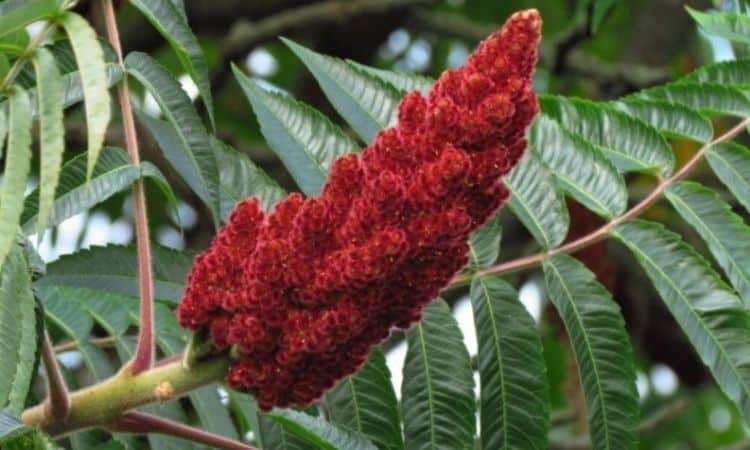
The procedure is as follows:
- Soak vinegar tree seeds in hot water for 24 hours.
- Mix with a moist sand-earth mixture in a ratio of 1:1.
- Pour into a plastic bag and place it in the refrigerator.
- The seeds remain in the refrigerator at 4 – 6 °C for about 4 weeks.
- Then sow the seeds in a low-nutrient growing medium. The sowing depth is about 0.5 cm.
- Now place the sowing container in a light and warm place at 15 – 20 °C.
- Keep the seeds well moist for the next few weeks until germination and prick the seeds as soon as the first real leaf pair after the form of the cotyledons.
Tip: Sometimes the seeds of the vinegar tree start to germinate already in the bag in the refrigerator. In this case, they should be taken out directly and converted into growing soil.
Remove vinegar tree: How to get rid of it
Vinegar trees are spread gladly by birds over their seeds in the gardens – not always the large shrub so pretty in the autumn is however also welcome. Because a new plant can develop from each of the fleshy roots, it is not enough to cut the tree or only partially dig it out. The roots should be removed as completely as possible.
The root runners of the vinegar tree can also quickly become a nuisance in the garden, even if you would like to keep the tree. To save yourself the trouble, you should take care not to cut the vinegar tree too much and not to damage the roots. In this way, the root runners do not develop at all. Using a deep root barrier during planting is also a good measure to avoid problems with the runners later.
Once they are there, it is a good way to remove the still young shoots by regularly mowing them down. Larger and already slightly lignified plants should be generously cut off with a spade, removing as many roots as possible.
Ornamental trees and shrubs with a gaudy autumn coloring quickly attract attention in any garden. Discover more species in our special article on shrubs and trees with intense autumn colors.
You Might Also Like Fertilizing Japanese Maple Tree

